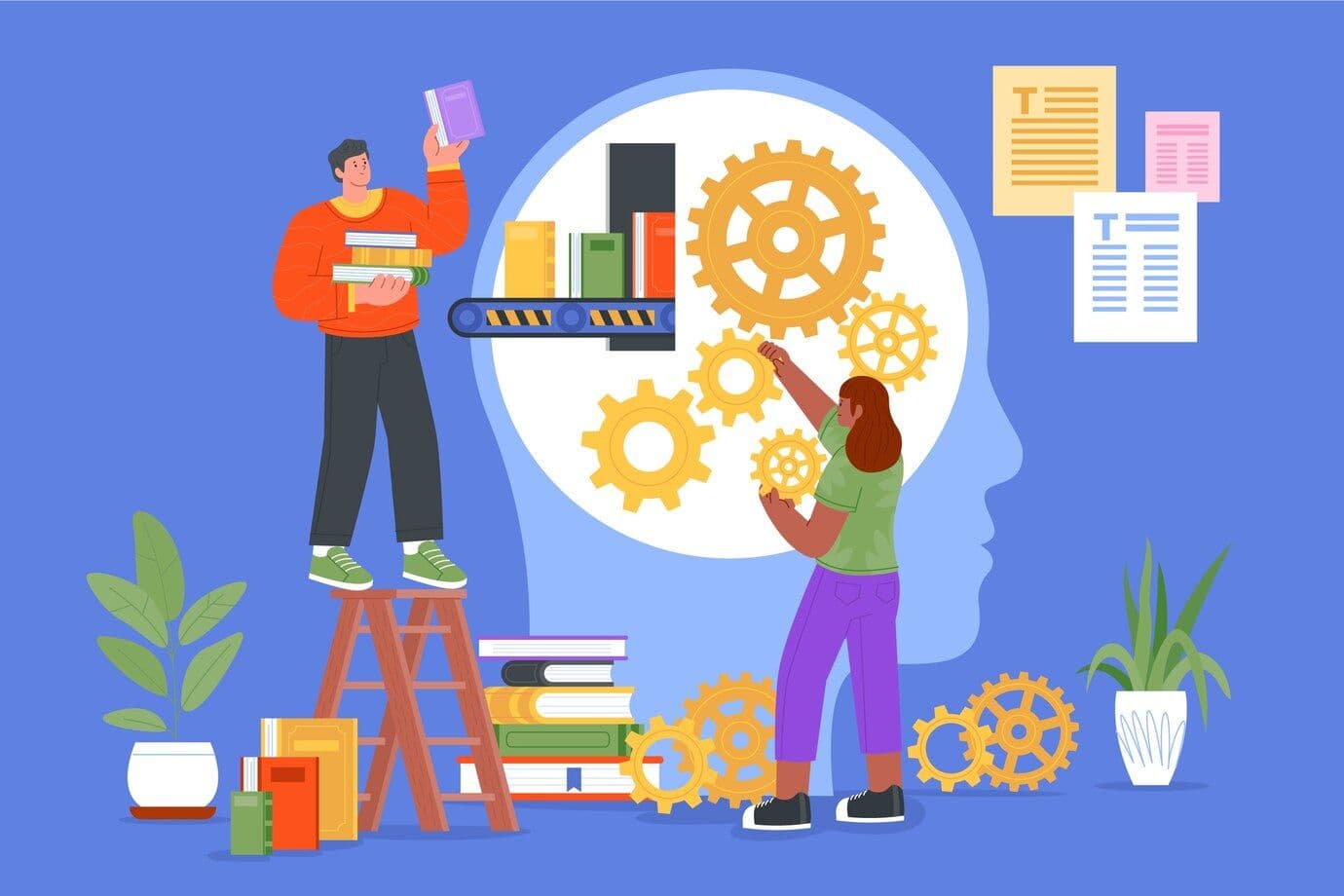A Guide: Identifying Skill Gaps In Your Organization
Published on January 8th, 2023
It is important for organizations to identify skill gaps in order to eliminate them and move towards their end goal. It is beneficial for both employees and employers to identify skill gaps for their growth. Firstly, let’s look at what skill gaps are, and how to identify them. Here’s a complete guide for you to know about skill gaps in organizations.
What are skill gaps? Technically speaking, skill gaps refer to the difference between the skills and knowledge that an employee currently possesses and the skills and knowledge that are required for their current or desired role. These gaps can occur when an employee lacks the necessary skills or knowledge to perform their job effectively or when an employee lacks the skill or knowledge to advance in their career. Skill gaps can occur in a variety of areas, such as technical skills, digital skills, soft skills, industry-specific skills, etc. Skill gaps can also vary in size, from small gaps that can be filled through training and development, to larger gaps that may require more significant changes in an employee’s role or responsibilities. Now, how do we identify skill gaps?
“Before you are a leader, success is about growing yourself. When you become a leader, success is about growing others.” — Jack Welch
Ways to Identify Skill Gaps
Performance Evaluations: Compare the performance of the employees to their job requirements and expectations to identify areas where they may be lacking skills. Use KPIs to evaluate employees. Key performance indicators (KPIs) show how an individual contributes to the business as an employee. KPIs help in determining progression in the career of employees. It also helps to provide them compensation, rewards, benefits, and retention as per their skills. KPIs are the best data sources you can collect from employees to identify a skill gap. Individual employees may benefit from KPIs by tracking their own performance. They can immediately take measures to eliminate skill gaps through evaluations. The most important indicators to watch out for though are overall performance trends.
Surveys and Interviews: Ask employees and managers about their skills and training needs to identify areas where additional support is needed. This directly solves the issue of finding skill gaps. It is better to identify the skill sets and skill gaps in employees at the time of interviews. Here’s where you may require assistance from skill assessment platforms to assess the skills of employees and prospective candidates as early as possible. Doubtful about the best skill assessment platforms? HireQuotient is your answer! We assess the skills of your prospective candidates in the best way possible and separate the wheat from the chaff, making sure there are no skill gaps in the new hires.
Job Analysis: Analyze the task and responsibilities of certain roles to identify the skills and knowledge required for successful performance.
Industry Benchmarking: Compare the skills and qualifications of your organisation’s employees to those of similar companies in your industry to identify areas where you may be falling behind.
Career Development Plans: Assessing the future requirement of the company and thereby identifying the skill set needed for the company to reach its future goal and identify the skill gap accordingly.
Data Analysis: Analyzing the data of employees’ performance, production, and attendance to identify the skill gap.
Improve: Benchmarking an employee's skill against industry standards or best practices to identify areas for improvement.
How to Eliminate Skill Gaps
Eliminating skill gaps in the workplace can be challenging, but there are several strategies that companies can use to address this issue.
Training and Development: Provide training and development opportunities for employees to acquire new skills and improve existing ones. This can include on-the-job training, mentoring and formal education programs. Job Rotations: Encourage employees to take on different roles within the company to gain a broad range of skills and experience.
Cross-training: Encourage employees to learn the skills of their colleagues to create a more versatile workforce.
Career Development Plans: Create career development plans for employees to help them identify and acquire the skills they need to advance in their careers.
Hiring for Potential: Look beyond the specific skills listed in job postings and consider hiring candidates who have the potential to learn the necessary skills on the job.
Leveraging Technology: Implement technologies that can automate certain tasks or functions, allowing employees to focus on developing their skills in their areas.
Encourage Continuous Learning: Create a culture of continuous learning by encouraging employees to take on new challenges and continuously develop their skills. This will help companies create a more versatile and skilled workforce.
Partner with Educational Institutions: Partnering with educational institutions will aid in providing training and development opportunities for employees.
Assessing the Skills of the Workplace: Regular assessment of the skills of the workforce helps in identifying gaps and creating targeted training and development programs to address them.
Employee Engagement: Encourage employee engagement by creating a work environment that fosters creativity, innovation, and collaboration, which can lead to new skill acquisition.
It’s important to note that eliminating skill gaps is an ongoing process that requires a combination of strategies and a strong commitment to employee development. The company should be prepared to invest time, money and resources to achieve this goal. While skill gaps can be a challenge for companies, they can also present some opportunities.
How can Skill Gaps Help?
Sometimes, skill gaps can be a boon too. Once you find the skill gaps, there is always a chance for improvement. Don’t you think it’s better that way? Let’s look in detail at how skill gaps can add to the development of an organization.
Identify Training Needs: Skill gaps can help identify areas where employees need additional training and development, allowing companies to create targeted training and development, and allowing companies to create targeted training programs that address specific needs.
Identify New Business Opportunities: By identifying skill gaps within an organization, it can identify new business opportunities and invest in developing the necessary skills to capture these opportunities.
Create a Culture of Innovation: By recognising and addressing skill gaps, organizations can create a culture of innovation, where employees are encouraged to continuously learn, grow and take on new challenges.
Create a more Diverse Workforce: Organizations can create a more diverse workforce if they constantly update their skills. This will be possible as the employees can bring their unique strengths and perspectives to the table.
Build Work Culture: Employee skill updation can create an environment that fosters employee engagement, where employees feel that their skills and talents are valued and utilized This indeed, results in building a positive work culture.
However, skill gaps can have negative effects if they are not recognized and properly addressed. Companies should make sure that they are proactive in identifying and addressing skill gaps, as they can help to create a better workforce to meet the challenges for today’s as well as the future business environment.
Examples of Skill Gaps
Some examples of skill gaps that companies may encounter include: Technical Skills: Lack of knowledge or experience in specific technologies or software, such as programming languages, databases, or software development tools.
Digital Skills: Lack of digital literacy and skills in areas such as data analysis, digital marketing, or e-commerce.
Soft Skills: Lack of communication, teamwork, or leadership skills, which can be critical for success in a variety of roles.
Industry-specific Skills: Lack of knowledge or experience in a specific industry, such as healthcare, finance, or manufacturing.
Foreign Language Skills: Lack of proficiency in a foreign language, which can be important for companies that operate in a global market.
Adaptability Skills: Lack of ability to adapt to new technologies or changes in the business environment.
Project Management Skills: Lack of knowledge or experience in managing projects, including planning, budgeting, and risk management.
Creativity and Innovation Skills: Lack of ability to think out of the box, generate new ideas, and innovate.
Skill gaps can vary according to companies, roles and industries. These are some of the common skill gaps that we can see. There are other skills like sales and negotiation skills that employees would require. If they lack knowledge or experience in sales negotiation which is vital for business development, it may be a significant lack. Other skills that employees may lack are diversity, equity and inclusion skills. It is basically the lack of understanding or knowledge about the diversity of the organization and the skill to promote it to create a better work environment. To maintain diversity, companies can also think of hiring foreign-born talents. According to Skills Gap Report by SHRM, over 85% of the people who took the survey feel that it is crucial to recruit talent to meet business requirements, regardless of the candidate’s nationality.
How do Skill Gaps reflect on Teamwork?
Skill gaps can have a significant impact on teamwork within a company. When team members have different levels of skills and knowledge, it can create challenges for collaboration and coordination. Some specific ways that skill gaps can affect teamwork include:
Communication Difficulties: When team members have different levels of skills and knowledge, it can be difficult for them to communicate effectively, which can lead to misunderstandings and delays.
Inefficient Processes: Different levels of skills in team members can lead to inefficiency as tea members with lower skills may not be able to perform tasks as quickly or effectively as those with higher skills.
Lack of Trust: There are possibilities that employees with higher skills do not trust the abilities of those with lower skills. This may create confusion and disparities in the team. High-skilled employees may feel that they are held back by those with lower skills, thus creating conflicts within the team.
Imbalanced Workload: There are chances that employees with higher skills take on more responsibilities than they should while others are not able to contribute as much.
Lack of Creativity: Skill gaps can bring in a lack of new ideas and perspectives. Thus, it is crucial to keep up-to-date so that all members can creatively contribute to the team equally.
To sum it all up, it’s very crucial for organizations to identify and eliminate skill gaps. Companies should invest in training and development programs, encourage cross-training, and implement mentorship programs. Companies should also be keen on creating a culture that values continuous learning and encourage employees to take on new challenges. Additionally, companies can use tools such as employee performance management, career development plans and regular skill assessments to identify skill gaps. Feel free to take a look at the vast repository of skill assessments that we have in HireQuotient’s Assessment Library!
Authors

Soujanya Varada
As a technical content writer and social media strategist, Soujanya develops and manages strategies at HireQuotient. With strong technical background and years of experience in content management, she looks for opportunities to flourish in the digital space. Soujanya is also a dance fanatic and believes in spreading light!
Hire the best without stress
Ask us how
Never Miss The Updates
We cover all recruitment, talent analytics, L&D, DEI, pre-employment, candidate screening, and hiring tools. Join our force & subscribe now!
Stay On Top Of Everything In HR

